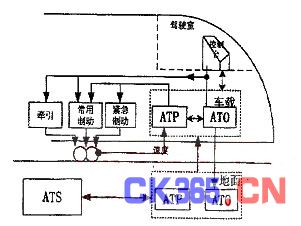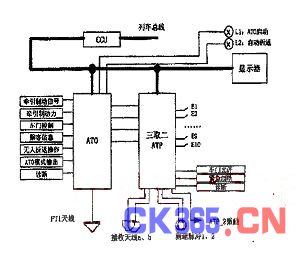The Automatic Train Control (ATC) system plays a crucial role in meeting the high efficiency and density demands of urban rail transit systems. Among its key components, the Automatic Train Operation (ATO) subsystem simulates the tasks of an experienced driver, enabling the train to operate efficiently. By utilizing ground information, ATO controls the traction and braking of the train, ensuring it runs in the optimal condition, enhancing passenger comfort, improving punctuality, and reducing energy consumption.
Many countries have made significant progress in developing ATO systems, but China was previously lagging in this technology. This paper aims to compare and analyze the technical features of three ATO systems, offering insights into their design and performance for future localization efforts.
1. Introduction to ATC and ATO
The ATC system is designed to regulate train intervals for safety and efficiency, consisting of three main subsystems: Automatic Train Supervision (ATS), Automatic Train Protection (ATP), and Automatic Train Operation (ATO). ATS monitors train operations based on a schedule, while ATP ensures safety through speed control and door management. ATO manages train speed and precise station stops, enhancing overall operational efficiency.
ATO receives commands from ATS and processes them via track circuits or ground communication systems. It calculates speed based on line conditions, executes control commands, and ensures accurate parking. The working principle of ATO is illustrated in Figure 1.

Figure 1: ATO Working Principle Diagram
2. Technical Characteristics Comparison of ATO Systems
In the early 1990s, Beijing Metro Line 1 installed ATO equipment from Westinghouse (unused), while Shanghai Metro Line 1 introduced ATO from GRS in 1996, and Guangzhou Metro Line 1 adopted Siemens' system in 1999. These systems differ in design, data transmission, and control strategies, prompting a comparative analysis to support local development.
2.1 Beijing Metro Line 1 ATO System
Beijing's ATO system includes onboard controllers, antennas, and ground PAC communicators. Data is transmitted via AF900 track circuits, with speed commands and gate signals modulated at different frequencies. Control strategies involve calculating speed curves and adjusting braking to ensure safe operation.
2.2 Shanghai Metro Line 1 ATO System [3]
Shanghai’s ATO system uses TWC communication and has multiple speed command levels. It adjusts speed using feedback loops and applies braking when exceeding limits. Station parking is achieved through loop markers and track circuit IDs, ensuring accurate positioning.
2.3 Guangzhou Metro Line 1 ATO System [4]
Guangzhou’s ATO system utilizes FTGS digital track circuits to transmit messages. It offers three speed modes—maximum, normal, and energy-saving—and supports cruise/idle functions for time adjustment. Parking is managed through intersecting loops, allowing continuous position tracking during station stops.
2.4 Comparative Analysis of the Three Systems
Among the three systems, Guangzhou’s ATO performs best, followed by Shanghai. Key differences include data acquisition methods, speed control modes, and parking techniques. Guangzhou’s mode curve approach provides smoother control, while its continuous loop system allows more flexible position tracking.
3. Localization of Onboard ATO Equipment
To develop a localized ATO system, the following requirements are essential: message-based track circuit communication, mode curve speed control, continuous loop parking, and real-time time adjustment. Based on Guangzhou’s system, the ATO vehicle equipment will be designed to integrate with existing infrastructure, ensuring efficient and reliable operation.
3.1 Working Principle
The ATO system receives mission commands from ATS, combines them with track information, and transmits them via track circuits. The ATP processes the data and forwards it to ATO, which calculates speed and executes control. The cruise/idle module helps adjust running time, and PTI communication sends train status back to ATS for further commands.
3.2 Design of ATO Vehicle Equipment
The ATO vehicle equipment includes a central control unit (CCU), display lights, signal lines, and switches. It interfaces with ATP and displays relevant information. Ground data is received via antennas, and vehicle-ground communication is handled through PTI. The interface diagram is shown in Figure 3.

Figure 3: ATO Vehicle Equipment Interface
This analysis highlights the importance of ATO systems in modern rail transit. With continued research and development, China is expected to establish a self-developed ATO system in the near future, enhancing the efficiency and safety of urban rail networks.
Network Accessories,Wifi Adapter,Fiber Optic Network Components,Splitter Fiber Optic
Cixi Dani Plastic Products Co.,Ltd , https://www.danifiberoptic.com